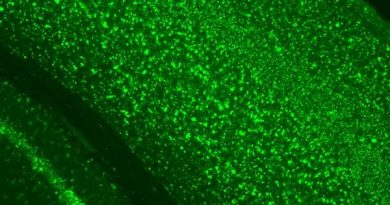Novel dural puncture-sealing device decreases cerebrospinal fluid leakage
These leaks could be the cause of strong headaches that can last weeks, delaying recovery following an intervention with this anesthetic technique or making it more difficult for the mother to care for her child following childbirth with an epidural.
Epidural anesthesia is a technique that requires great accuracy to avoid accidentally puncturing the dura matter, one of the three meninx that protect the central nervous system. The cerebrospinal fluid, which feeds the nervous system, is located under the dura mater. Leaks of this fluid can cause strong headaches that can be crippling and delay the recovery following an intervention with this anesthetic technique. They are especially severe in women who suffer this complication after receiving an epidural while giving birth.
Valencian researcher Carlos García Victoria has patented a device that decreases the leak of cerebrospinal fluid if it accidentally punctures the dura mater. Its successful validation in an ovine model, a necessary prior step for its application on humans, has been performed at the Veterinary Clinical Hospital by lecturers from the Department of Medicine and Animal Surgery of the Faculty of Veterinary Medicine and the Clinical Veterinary Hospital of the CEU Cardenal Herrera University (CEU UCH) José Ignacio Redondo, Mireia García Roselló, Álvaro Gutiérrez and Vicente Esteve.
Researchers from several centers and universities have taken part in the design and creation of this innovative design. Carles García Vitoria, who carries out his research duties at the Fisabio foundation, was included by the American MIT on the ‘Innovators Under 35 Europe 2017’ list.
Doctor Miguel Ángel Reina, one of the greatest experts on an international level on dura mater injuries, is a specialist from the Department of Anaesthesiology of the University of Florida, in the United States, the CEU San Pablo University and the Montepríncipe Hospital. José de Andrés, member of the Department of Anaesthesiology of the University of Valencia and the Hospital General; and Andre Boezaart, from the University of Florida and the Alon P Winnie Research Institute of the Republic of South Africa.
The designed device can be applied immediately after detecting the accidental puncture of the dura mater, sealing the cerebrospinal fluid leakage in a simple way. This would avoid the cause that the scientific community associates with the subsequent headaches, which can last several days or even weeks, extending hospital stays and recovery following the intervention.
Prior step for its use on humans
The results of its efficiency on an animal model have just been published in the journal with the second greatest journal impact factor on Human Anaesthesiology on an international level: Regional Anesthesia and Pain Medicine.
The design of this animal model has made it possible to successfully validate the efficiency of the device. This is the first necessary step for its use to be authorized on humans.”
José Ignacio Redondo, Anesthesiology Lecturer, Faculty of Veterinary Medicine, CEU UCH
Furthermore, the work conducted by a multidisciplinary Human and Veterinarian Medicine team “is a good example of the collaboration possibilities that professionals of one field and another have to achieve progress in anaesthesiology that benefit both people and animals.”
Asociación RUVID
García-Vitoria, C., et al. (2021) Validation of a bioabsorbable device that seals perforations after Tuohy needle dural puncture in an ovine model. Regional Anesthesia and Pain Medicine. doi.org/10.1136/rapm-2020-102225.
Posted in: Device / Technology News | Medical Procedure News | Medical Science News
Tags: Animal Model, Central Nervous System, Doctor, Epidural, Hospital, Medicine, Nervous System, Pain, Research, Surgery, Veterinary
Source: Read Full Article



